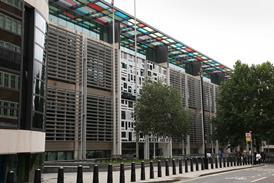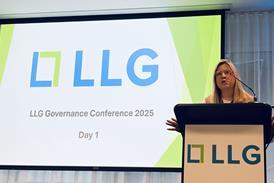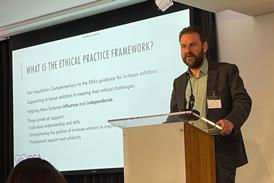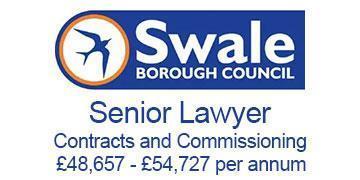The new Practice Direction 51ZH - Access to Public Domain Documents has now been published and will come into force on 1 January 2026, running for two years in Commercial Court and London Circuit Commercial Court of the King’s Bench Division, as well as the Financial List (Commercial Court and Chancery Division). The Practice Direction will apply to both existing and new proceedings. It will be reviewed after the first six months. The Judiciary website has also published a guidance note on the scheme.


Under the pilot, documents deemed 'Public Domain Documents' would be placed on the public side of the CE-File. In addition to those documents that the public can currently access or apply to access, a potentially controversial category of documents termed those ‘critical to understanding the case’ will also be available. The guidance note clarifies that this provision is narrowly targeted, intended to capture only those documents where it would be artificial to treat them as non-public. Currently, anyone can request and obtain most court documents referenced in hearings, subject to court approval. The pilot removes this application requirement for a defined category of Public Domain Documents by requiring parties to file them on CE-File’s public access section within specified timeframes. Although these documents will typically already be filed on the party and court access sections of CE-File, they must be re-filed publicly once a public hearing commences. This process prevents inadvertent publication of private material by the court, as parties retain complete control over which documents are filed publicly.

There will, however, still be an opportunity to limit which documents, or specific information within them, are published — the intention is that this will be addressed with the judge at the hearing.
Parties will be able to remove or redact sensitive information through a mechanism known as filing modification orders (FMOs). FMOs may be made by the court of its own initiative or sought by any party or any non-party named or referred to in a Public Domain Document. The goal is not only to increase transparency in commercial litigation, but also to likely expand the measures to other courts in due course once lessons have been learned from the pilot scheme. The emphasis here is on reform from the ground up, with the potential for differing practices across different courts with different needs once those courts eventually test the public domain. Ultimately, the pilot aims to align court processes with the fundamental principle of open justice, creating a default that documents introduced in public hearings should also be accessible.
The new regime has several practical implications:
- Publicity risks: documents will be readily accessible to anyone with an interest in the dispute, magnifying reputational and commercial risks. Media outlets and competitors will be able to obtain copies of such documents without applying to the court, potentially going on to use them in press coverage or broader public relations campaigns (without the cost of applying to court or the risk of defamation).
- Dual purpose documents: with a broader ultimate audience, parties may need to have public consumption in mind when drafting certain documents, something which may not be straightforward to navigate.
- Greater scrutiny: easier public and media access means a higher likelihood of close examination of information on the public stage. Detailed witness evidence, or previously private commercial terms, might end up on various stakeholders’ radars.
- Attractiveness of arbitration and mediation: arbitration and mediation are confidential in nature. As such, parties concerned to avoid additional eyes on the details of their disputes may look increasingly to alternative forums to resolve their claims where their interests in preserving privacy and reputation may be better served.
- Court of public opinion: conversely, smaller or less well-capitalised businesses may find increased visibility of case details advantageous—particularly if they aim to highlight the conduct of a larger or more powerful partner, or to leverage a settlement.
- International and third-party claims: foreign litigants, particularly in US proceedings, may attempt to rely on the pilot to obtain documents for use in overseas litigation. Because the English courts have traditionally refused broad or class-based requests tantamount to pre-trial discovery, easier access to court-filed documents under the pilot scheme may be perceived by some as a back door to the same objective.
- Early confidentiality planning: integrating confidentiality strategies from the outset of proceedings, including considering whether to redact sensitive information or invoke FMOs when necessary, may prove vital to the overall litigation approach.
- Court shopping: for as long as the pilot continues to apply only to the specified courts, parties at the outset may have greater regard to the court in which they issue their claims.
- Settlement timing: settling a dispute before the risk of greater public exposure becomes significant is likely to take on added importance, and incorporating this consideration into litigation strategy will be crucial. Early resolution could enable parties to avoid having certain documents in open court (and thereafter the public domain) — particularly if the hearing is scheduled to occur after 1 January.
- Time estimates and burdens on parties: parties will need to give consideration to the additional time that may be required at hearings to discuss any FMO requests with the judge. Redactions pursuant to an FMO may also, depending on the extent of the order, place additional burdens on parties. Unclear too is the extent to which the FMO process (as we have seen with certain measures implemented in other pilot schemes) may create any opportunity for strategic point-scoring between parties (and the costs associated with the same), even though the default position, from which it will be hard to sway judges, is that documents once in open court become public.
The open documents pilot embodies a notable advance in the push for transparency, aligning with historic common law principles and responding to modern calls for greater public scrutiny. Nonetheless, many tactical and procedural questions remain, particularly around how judges will balance openness with genuine confidentiality needs.
Parties litigating in the commercial courts should prepare for the shift this pilot represents.
Andrew Howell, partner, and Natalia Faekova and Helen Robinson, senior associates, at Taylor Wessing
































No comments yet